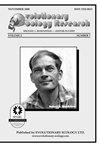Megaherbivores as pacemakers of carnivore diversity and biomass: distributing or sinking trophic energy?
Q2 Agricultural and Biological Sciences
引用次数: 18
Abstract
Question: What is the trophic role of megaherbivores? Hypothesis: Depending on their life histories, megaherbivores can either act as sinks or distributors of trophic energy. Methods: Comparative review of mammal and dinosaur faunas, and aspects of their reproductive biology. Conclusion: Extant (mammalian) megaherbivore populations represent trophic sinks that potentially limit carnivore diversity and productivity, because they are immune to predation and follow a reproductive strategy of very few, well-protected offspring. In contrast, in dinosaur faunas, particularities of reproductive biology such as a larger number of offspring and limited parental care made a major part of megaherbivore biomass available to carnivores. This increase in available trophic energy in consequence allowed for larger body masses and higher species diversity of dinosaur carnivores.巨型食草动物作为食肉动物多样性和生物量的起搏器:营养能分布还是下沉?
问题:大型食草动物的营养作用是什么?假设:根据它们的生活史,大型食草动物既可以作为营养能量的储存者,也可以作为营养能量的分配者。方法:对哺乳动物和恐龙的区系及其生殖生物学方面的研究进行比较。结论:现存的(哺乳动物)巨型食草动物种群代表了潜在限制食肉动物多样性和生产力的营养汇,因为它们对捕食免疫,并且遵循极少数保护良好的后代的繁殖策略。相比之下,在恐龙动物群中,生殖生物学的特殊性,如后代数量较多和亲代照顾有限,使巨草食动物的大部分生物量可供食肉动物利用。因此,可利用营养能的增加使得食肉恐龙拥有更大的体重和更高的物种多样性。
本文章由计算机程序翻译,如有差异,请以英文原文为准。
求助全文
约1分钟内获得全文
求助全文
来源期刊

Evolutionary Ecology Research
生物-进化生物学
自引率
0.00%
发文量
0
审稿时长
>12 weeks
期刊介绍:
Evolutionary Ecology Research publishes original research contributions focusing on the overlap between ecology
and evolution. Papers may treat any taxon or be general. They may be empirical, theoretical or a combination of the two.
EER prefers conceptual contributions that take intellectual risks or that test ideas.
 求助内容:
求助内容: 应助结果提醒方式:
应助结果提醒方式:


